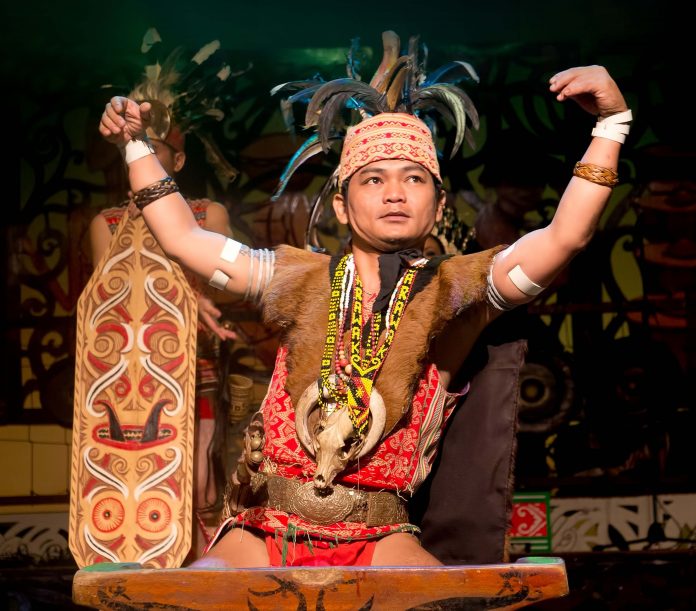

Text: Rachel Kwek
Gazetted as a public holiday in place of Sarawak Day in Malaysia in 1964, Gawai Dayak is an important occasion for the Dayak — a collective name for the tribes of Bidayuh, Iban, Kayan, Kenyah, Kelabit, Murut and more.
Though the festival falls on 1 June, celebrations begin on 31 May evening with the Muai Antu Rua ceremony meant to remove the spirit of greed. Families who live in Iban longhouses will also place unwanted items in a winnowing basket and throw them to the ground from the end of the houses to symbolise the ridding of bad luck. Dayaks typically brew a kind of rice wine, tuak, for the festive celebrations. In Sarawak, street parades and cultural activities are held as early as one week before the day.
On the evening of Gawai Dayak, an offering ceremony (miring) is presided by a community chief who thank gods for the harvests, seek guidance and blessings from them as he sacrifices a cockerel. The tribal communities will then gather for dinner comprising traditional delicacies like pansuh, peganan (cakes made from coconut milk, rice flour and sugar) and ngelulun pulut (glutinous rice roasted in bamboo stems).

At midnight, a gong is sounded. The longhouse chief leads everyone in drinking Ai Pengayu (tuak for long life) and the villagers wish one another long life, health and prosperity. Following this, they walk up and down the entire length of the longhouse to welcome spirits in a ritual known as Ngalu Petara. Celebrations continue into the night and the following day with traditional music and dancing. It is also common for the tribespeople to visit one another’s houses to indulge in festive dishes and tuak. In a practice called masu pengabang, hosts of longhouses serve guests tuak before they can enter.
The following day, festival activities like poetry recitation, cock-fighting, blowpipe demonstrations and ngajat competitions take place. Believed to be performed by the Iban people since the 16th century, the traditional ngajat dance form is performed to music made by ethnic percussion instruments. Tribal communities traditionally hold beauty pageants that crown a festival king and queen from each tribe.










